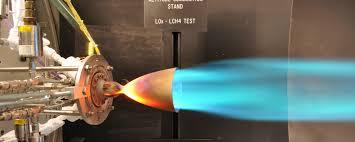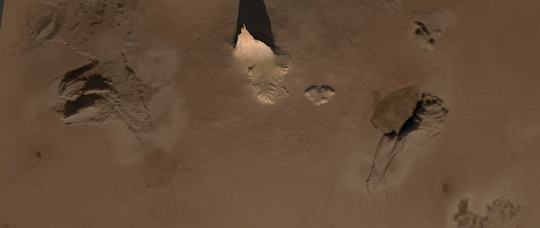#PROPULSION SYSTEM
Explore tagged Tumblr posts
Text
United States hyperloop technology market size reached USD 620 Million in 2024. Looking forward, IMARC Group expects the market to reach USD 17,800 Million by 2033, exhibiting a growth rate (CAGR) of 45.3% during 2025-2033. The inflating need among key players for offering a glimpse into the future of high-speed and sustainable transportation is primarily driving the regional market.
#United States Hyperloop Technology Market Report by Component Type (Tube#Propulsion System#Capsule#and Others)#Speed (More than 700 kmph#Less than 700 kmph)#Carriage Type (Passenger#Cargo/Freight)#and Region 2025-2033
0 notes
Link
The article "Convair B-36 Peacemaker" by Peter Suciu, published on "The Armory Life” on October 19, 2024, explores the significance of the B-36 Peacemaker, an imposing strategic bomber that played a vital role during the Cold War. Developed for long-range nuclear missions without refueling, it was the largest mass-produced piston-engined aircraft with a significant wingspan and length. Originally conceived to bomb Nazi Germany, its development pivoted towards counteracting the Soviet Union after World War II. Although seen as controversial due to concerns over its practicality in the modern military landscape and causing friction with naval aviation interests, it was a crucial asset in the Strategic Air Command (SAC), capable of carrying massive hydrogen bombs. Despite never being used in combat, the B-36 served as a deterrent to the USSR during its operational years, bridging the transition from propeller-driven bombers to the jet-powered age, until being replaced by the B-52 Stratofortress. Today, only four B-36 Peacemakers survive, including one at the National Museum of the United States Air Force, underlining its historical legacy as a deterrent rather than a combatant.
#Convair B-36 Peacemaker#Strategic Air Command#United States Air Force#Cold War#intercontinental bomber#nuclear deterrence#piston engines#jet engines#development program#airborne positions#aerial reconnaissance#7th Bomb Wing#509th Bomb Wing#Boeing B-52 Stratofortress#nuclear payload#bomber aircraft design#propulsion system#long-range strike capability#defense strategy.
1 note
·
View note
Text
#Mast & Power Assembly#WAYDOO#propulsion system#6000W motor#aluminum alloy#65cm#84cm#brushless motor#WAYDOO mast assembly#6000W brushless motor#aviation-grade aluminum mast#water sports propulsion#durable mast unit
0 notes
Text
Military Ground Vehicle Propulsion System Market: Tech Drives Defence

According to the Stockholm International Peace Research Institute, in 2023, the global military expenditure reached a staggering $2.443 trillion, a 6.8% increase from the previous year. With the rise in military spending, defense technology has evolved significantly, wherein military ground vehicle propulsion systems are emerging as a critical component. Propulsion systems in military ground vehicles are essential for ensuring operational effectiveness and mobility across diverse terrains. Accordingly, our estimates suggest that the global military ground vehicle propulsion system market is set to advance with a CAGR of 6.45% during 2024-2032.
Additionally, countries worldwide are investing heavily in upgrading their defense capabilities to maintain strategic superiority. For instance, in 2023, the United States increased its military expenditure by 2.3%, while China allocated approximately $296 billion to its defense budget. Thus, an escalating focus on military modernization programs and geopolitical tensions significantly bolsters the military ground vehicle propulsion system market.
Military Ground Vehicle Propulsion System Market: Key Technologies Gaining Traction
Conventional Propulsion Systems:
Conventional propulsion systems, primarily powered by internal combustion engines, remain prevalent due to their reliability and familiarity. These systems are well-suited for heavy-duty applications, offering robustness and ease of maintenance. However, their reliance on fossil fuels and lower efficiency compared to newer technologies pose limitations.
Electric Propulsion Systems:
These systems are gaining traction for their superior efficiency and lower environmental impact. The integration of electric motors in military vehicles offers reduced noise and heat signatures, which are advantageous in stealth operations. Recent advancements have led to the deployment of electric propulsion systems in light combat and reconnaissance vehicles.
For example, the US Army’s Autonomous Ground Resupply (AGR) program employs hybrid and electric propulsion systems to support logistics and supply chain operations, demonstrating the versatility of these technologies.
Hybrid Propulsion Systems:
With the combined benefits of conventional and electric systems, these systems offer improved fuel efficiency and operational flexibility. They can also switch between power sources, optimizing performance based on mission requirements. The US Army’s Ground Mobility Vehicle (GMV) program has successfully integrated hybrid propulsion, highlighting its effectiveness in enhancing range and endurance.
BAE System’s Hybrid Electric Drive technology is used for fuel efficiency and to reduce logistical support requirements. As per sources, it helps enhance fuel efficiency by around 25%.
In May 2024, A team of engineers headed by Michigan Tech’s Advanced Power Systems Research Laboratories (APS Labs) provided the US Army’s Rapid Capabilities and Critical Technologies Office (RCCTO) with a newly developed tactical hybrid electric High-Mobility Multipurpose Wheeled Vehicle (HMMWV).
What’s Next for Military Ground Vehicle Propulsion Systems?
Looking ahead, the rise of autonomous ground vehicles (AGVs) represents a major trend, with autonomous systems requiring advanced propulsion solutions to enhance their operational efficiency and reliability. Companies like Lockheed Martin are at the forefront, developing autonomous solutions that aim to redefine the future of military ground transport. Investment opportunities abound in the development of next-generation propulsion technologies, particularly those integrating AI and machine learning for optimized performance.
FAQs:
Q1) What are the benefits of electric propulsion systems over conventional systems in military vehicles?
Electric propulsion systems offer higher efficiency, reduced noise and heat signatures, and lower environmental impact, making them ideal for stealth operations and sustainable military strategies.
Q2) How are hybrid propulsion systems advantageous for military ground vehicles?
Hybrid propulsion systems provide improved fuel efficiency and operational flexibility by combining conventional and electric power sources, allowing vehicles to adapt to various mission requirements.
Q3) What future trends should investors watch in the military ground vehicle propulsion system market?
Investors should focus on the rise of autonomous ground vehicles and the integration of AI-driven propulsion technologies.
#MILITARY GROUND VEHICLE#PROPULSION SYSTEM#Aerospace & Defense#triton market research#market research reports
0 notes
Text
Exploring Space: The ISS, Cape Canaveral, Propulsion Systems, and the Boeing Starliner Mission
The pursuit of space exploration has led humanity to achieve remarkable milestones. Among the most notable are the International Space Station (ISS), Cape Canaveral Space Force Station, advancements in propulsion systems, and the significant progress made by the Boeing Starliner mission. Each of these elements represents a critical component of our journey into space, illustrating the collaboration, innovation, and determination that drive our quest to explore the cosmos.

International Space Station: A Beacon of International Collaboration
The International Space Station (ISS) is one of the most significant achievements in human space exploration. Launched in 1998, the ISS is a symbol of international cooperation, involving five space agencies: NASA (United States), Roscosmos (Russia), JAXA (Japan), ESA (Europe), and CSA (Canada). This collaborative effort has resulted in a continuously inhabited orbital laboratory that serves as a platform for scientific research and technological development.
The ISS orbits Earth at an average altitude of approximately 420 kilometers, traveling at a speed of around 28,000 kilometers per hour. It provides a unique microgravity environment, allowing scientists to conduct experiments that are not possible on Earth. Research conducted on the ISS spans various fields, including biology, physics, astronomy, and materials science. For example, studies on fluid dynamics in microgravity help scientists understand how liquids behave without the influence of gravity, which has implications for a wide range of applications, from industrial processes to medical treatments.
The ISS also plays a crucial role in studying the effects of long-duration spaceflight on the human body. Astronauts aboard the ISS provide invaluable data on how microgravity impacts bone density, muscle mass, cardiovascular health, and other physiological aspects. This research is essential for preparing future missions to Mars and other distant destinations, where astronauts will need to endure extended periods in space.
Cape Canaveral Space Force Station: The Launchpad of Space Exploration
Cape Canaveral Space Force Station, located on Florida's east coast, has been a cornerstone of American space exploration since the 1950s. Initially known as the Cape Canaveral Air Force Station, it was renamed in 2020 to reflect its mission under the United States Space Force. The station's strategic location near the equator provides an advantage for launching rockets, as it allows them to take advantage of Earth's rotational speed, reducing the amount of fuel needed to reach orbit.
Cape Canaveral has been the launch site for many historic missions, from the early days of the Mercury and Gemini programs to the Apollo missions that landed humans on the Moon. The station continues to be a hub of activity, supporting a wide range of launches, including those by NASA, the United States Department of Defense, and commercial space companies like SpaceX and United Launch Alliance (ULA).
One of the most significant recent developments at Cape Canaveral is the integration of commercial spaceflight operations. The station has been upgraded to accommodate new types of rockets and spacecraft, reflecting the evolving landscape of space exploration. This shift towards commercial spaceflight is exemplified by the Boeing Starliner mission, which marks a significant milestone in the collaboration between NASA and private industry.
Propulsion Systems: The Engine of Space Exploration
Propulsion systems are the backbone of space exploration, enabling spacecraft to overcome Earth's gravity and travel through space. There have been significant advancements in propulsion technology since the early days of spaceflight, leading to more efficient and powerful systems that are critical for current and future missions.
Chemical propulsion is the most common type of propulsion used in space exploration. It involves the combustion of propellants (fuel and oxidizer) to produce high-speed exhaust gases that generate thrust. Liquid-fueled engines, such as those used in SpaceX's Falcon 9 and NASA's Space Launch System (SLS), offer the advantage of throttle control and the ability to be shut down and restarted. Solid rocket motors, used in boosters like those of the Space Shuttle and the SLS, provide high thrust and simplicity but lack throttle control.
Electric propulsion offers a more efficient alternative for deep-space missions. Systems such as ion thrusters use electric fields to accelerate ions to high speeds, producing thrust. Although the thrust generated by electric propulsion is much lower than that of chemical engines, the high efficiency allows spacecraft to operate for extended periods, making them ideal for missions to distant destinations like Mars or the outer planets. The Dawn spacecraft, which explored the asteroids Vesta and Ceres, is a notable example of a mission that successfully utilized electric propulsion.
Nuclear propulsion is an emerging technology that holds great promise for future space exploration. Nuclear thermal propulsion (NTP) uses nuclear reactions to heat a propellant, typically hydrogen, to generate thrust. This method could significantly reduce travel time to Mars, making it a key technology for future crewed missions beyond the Moon. While nuclear propulsion is still in the experimental stage, ongoing research aims to address the technical and safety challenges associated with this powerful propulsion method.
Boeing Starliner: A Milestone in Commercial Spaceflight
The Boeing CST-100 Starliner is a spacecraft developed under NASA's Commercial Crew Program, which aims to enable commercial transportation of astronauts to and from the ISS. The Starliner represents a significant milestone in the shift towards commercial spaceflight, reducing reliance on government-operated vehicles and fostering a competitive space industry.
Designed to accommodate up to seven astronauts, the Starliner is a reusable spacecraft capable of multiple missions. It features advanced avionics, automated docking systems, and a launch escape system to ensure crew safety in the event of an emergency during launch. The development of the Starliner has encountered challenges, including delays and technical issues, but each hurdle has provided valuable lessons that contribute to the overall safety and reliability of the spacecraft.
In December 2019, the Starliner embarked on its first uncrewed test flight, Orbital Flight Test-1 (OFT-1). Although the mission encountered software issues that prevented it from reaching the ISS, it successfully demonstrated many of the spacecraft's capabilities. Following a thorough review and addressing the issues identified during OFT-1, Boeing conducted a second uncrewed test flight, Orbital Flight Test-2 (OFT-2), in May 2022. This mission successfully docked with the ISS, paving the way for future crewed flights.
The first crewed mission of the Starliner, called Crew Flight Test (CFT), is a critical step towards certifying the spacecraft for regular astronaut transport. This mission will test the spacecraft's performance in real-world conditions with astronauts aboard, ensuring all systems function correctly and safely. Success in this mission will mark a significant achievement for Boeing and NASA, furthering the goal of maintaining a continuous American presence on the ISS using commercially operated spacecraft.
Conclusion
The International Space Station, Cape Canaveral Space Force Station, advancements in propulsion systems, and the Boeing Starliner mission are all pivotal elements of contemporary space exploration. The ISS continues to be a hub of scientific innovation and international cooperation, providing invaluable insights into space and human health. Cape Canaveral remains a cornerstone of American space endeavors, launching missions that push the boundaries of human knowledge and capability. Advancements in propulsion systems are essential for reaching farther destinations in our solar system. The Boeing Starliner represents a new era of commercial spaceflight, enhancing our ability to maintain and expand human presence in space.

Together, these components highlight the progress and potential of human space exploration, driven by both government agencies and commercial entities, and underscore the collaborative spirit essential for overcoming the challenges of exploring the final frontier.
#International Space Station#Cape Canaveral Naval Space Force Station#propulsion system#Boeing Starliner mission a milestone
0 notes
Photo




Io's 'Steeple Mountain' (Artist's Concept) via NASA JPL Created using data collected by the JunoCam imager aboard NASA's Juno spacecraft, this animation is an artist's concept that shows a view of a mountain on the Jovian moon Io. The data was recorded during close flybys of the moon in December 2023 and February 2024. The mountain, which the Juno science team has nicknamed "Steeple Mountain," is between 3 and 4.3 miles (5 and 7 kilometers) in height.
#nasa#jpl#jet propulsion laboratory#io#steeple mountain#concept art#juno#jovian moon#jupiter#moons#solar system#jovian system#space#astronomy#space exploration#science#data-based illustration#animation#3dcg#juno mission#junocam#landscape#elements#gifset#mixed post
132 notes
·
View notes
Text

he's been talking about space for 45 minutes.
#regret to inform you that I have Started Making Rarepair Content :tm:#to compensate for the general lack thereof#when you have no idea what the fuck a nano electrokinetic propulsion system does but at least he's talking at a normal volume for once#this is some point during the war#idk when#i know nothing about the war yet#except for a few 5 second clips#but assume there were quiet moments#and this is one of them#i can't draw people kissing so this is as close as i'm going to get#it's like the hayes code but edo era#i feel like zura would enjoy space#he'd be all wide-eyed and amazed by everything in that easily entertained way of his#and sakamoto would get to be the smartest person in the room for a change (apart from mutsu obv)#monk draws#sakazura#gintama#tatsuma sakamoto#katsura kotarou
112 notes
·
View notes
Note
What do you think Shadow's Air Shoes are made of? (Excluding the wiring and propulsion system)
Completely metal
Partially metal, partially fabric
Completely fabric
Partially fabric, partially plastic
Completely plastic
Partially plastic, partially metal
A combination of all three

Thank you for the submission chickenwaffles17!
Polling Sonic Fans for their opinions on all manner of things. Share good questions to indicate what you want asked. Submissions open.
#poll 79#What do you think Shadow's Air Shoes are made of? (Excluding the wiring and propulsion system)#character: shadow#speculations and wants#opinion poll#Sonic the Hedgehog#Sonic Fandom#Sonic#Sega#StH
60 notes
·
View notes
Text

sentinel au tess does her own mech repairs
messing around with a new brush :]
#mine#art#tess ruunaser#comic aurora#aurora comic#aurora webcomic#aurora sentinel au#stormbreaker is about 23 ft tall with arms designed so tess can a. channel lightning and b. punch even higher above her weight class#and also a propulsion system designed around lightning's repulsion on its back bc.... well bc i thought it would look cool honestly#im still designing it out
83 notes
·
View notes
Text


Worker installing the Aerojet AJ10-137 (Service Module Engine) on an Apollo Service Module at North American's Downey facility.
Date: March 28, 1966
SDASM Archives Casson_0023, Casson_0024
#Apollo CSM Block I#NASA#Apollo Program#Service Module Engine#Aerojet AJ10-137#Aerojet AJ10#AJ10-137#AJ10#Service Propulsion System#SPS#Rocket Engine#Construction#North American Aviation#Factory#Downey#California#March#1966#my post
139 notes
·
View notes
Text

JUPITER – JunoCam / 2024-09-20 Mission Phase : PERIJOVE 65
See more: https://jackiebranc.site/jupiter-and-its-galilean-moons/
Credit : NASA / SwRI / MSSS / Jackie Branc © CC BY
#elloon#jackie branc photographer#juno#juno spacecraft#jupiter#astronomy#nasa jpl#nasa#nasa photos#space exploration#jet propulsion laboratory#gas giant#solar system#Southwerst Research Institute#Malin Space Science Systems
48 notes
·
View notes
Text
Hopefully Voyager 1 can survive until later. In this 2025, Voyager 1 has been at a distance of 25.0 billion kilometers from Earth and will continue to fly away until later even when contact with Earth is lost in about 2036. It is the most distant human-made object from Earth.
#voyager 1#voyager#space#space exploration#outer space#deep space#deep space exploration#astronomy#galaxy#galaxies#nasa#astrophysics#solar system#interstellar space#deep space network#nasa deep space network#jet propulsion laboratory#earth#space news#star#stars#universe
16 notes
·
View notes
Video
NASA’s Juno Mission Gets Under Jupiter’s and Io’s Surface by NASA's Marshall Space Flight Center Via Flickr: New data from the agency’s Jovian orbiter sheds light on the fierce winds and cyclones of the gas giant’s northern reaches and volcanic action on its fiery moon. NASA’s Juno mission has gathered new findings after peering below Jupiter’s cloud-covered atmosphere and the surface of its fiery moon, Io. Not only has the data helped develop a new model to better understand the fast-moving jet stream that encircles Jupiter’s cyclone-festooned north pole, it’s also revealed for the first time the subsurface temperature profile of Io, providing insights into the moon’s inner structure and volcanic activity. JunoCam, the visible light imager aboard NASA’s Juno, captured this enhanced-color view of Jupiter’s northern high latitudes from an altitude of about 36,000 miles (58,000 kilometers) above the giant planet’s cloud tops during the spacecraft’s 69th flyby on Jan. 28, 2025. Credit: Image data: NASA/JPL-Caltech/SwRI/MSSS Image processing: Jackie Branc (CC BY) #NASA #MarshallSpaceFlightCenter #MSFC #Marshall #jpl #nasamarshall #juno #nasajuno #moon #Io Read more More about Juno NASA Media Usage Guidelines
#NASA#Marshall Space Flight Center#MSFC#Jet Propulsion Laboratory#JPL#Solar system and beyond#Juno#Jupiter#Space#planets#Io#moon#flickr
9 notes
·
View notes
Text
Military Ground Vehicle Propulsion System | Key Market Insights

As per Triton Market Research, the Global Military Ground Vehicle Propulsion System Market report is segmented by Vehicle Type (Fighting Vehicles, Combat Tanks, Self-Propelled Artillery, Small UGV Robots), Technology (Conventional Propulsion System, Electric Propulsion System, Hybrid Propulsion System, Plug-In Hybrid Electric Propulsion System), Application (Mining, Explosive Ordnance Disposal (EOD), Intelligence, Surveillance, and Reconnaissance (ISR), Logistics and Support, Combat Support, Other Applications), and Regional Outlook (Asia-Pacific, Europe, North America, Middle East and Africa, Latin America).
The report highlights the Market Summary, Industry Outlook, Porter’s Five Forces Analysis, Market Attractiveness Index, Regulatory Framework, Key Market Strategies, Market Drivers, Challenges, Opportunities, Competitive Landscape, Research Methodology and scope, Global Market Size, Forecasts & Analysis (2024-2032).
According to Triton’s research report, the global market for military ground vehicle propulsion system is expected to progress with a CAGR of 5.25% in revenue over the forecasting period 2024-2032.
Military ground vehicle propulsion systems are important components that generate the required power to propel tactical and armored military vehicles. These systems impact the agility, mobility, and overall performance of military ground vehicles in harsh operational surroundings.
Amidst rising geopolitical tensions, an increasing need for modern warfare techniques and technological advancements in electric and hybrid propulsion systems drive the growth of the studied market. Moreover, improving fuel efficiency to reduce the environmental impact and integrating AI to enhance the autonomous operations of military ground vehicles together influence the market progress.
However, the acquisition and development costs regarding advanced propulsion technologies obstruct the market growth. The biggest obstacle for manufacturers is the need for standardization across versatile military platforms, stringent regulations, and export limitations on defense technologies also hampers the expansion of the military ground vehicle propulsion system market.
In spite of these challenges, there is an increasing demand for electric and hybrid propulsion systems, which creates opportunities for the market players. As the military forces prioritize unmanned ground vehicles, there is a need to develop propulsion systems with highly advanced automation.
The major competitive companies in the studied market are Bae Systems, L3harris Technologies Inc, Cummins Inc, Caterpillar Inc, Oshkosh Corporation, Rheinmetall AG, Epsilor-Electric Fuel Ltd, General Dynamics, Northrop Grumman Corporation, Daimler AG, Israel Aerospace Industries Ltd, Lockheed Martin Corporation, General Motors Company, and Qinetiq Group.
Additionally, the need for developing strategic partnerships and improving defense forces provide new avenues for emerging market players to diversify their products. Similarly, tapping into regional markets can be another competitive edge for the stakeholders.
#MILITARY GROUND VEHICLE#PROPULSION SYSTEM#Aerospace & Defense#triton market research#market research reports
0 notes
Text
Milestones in Space Exploration: The ISS, Cape Canaveral, Advanced Propulsion Systems, and the Boeing Starliner
The International Space Station (ISS) stands as a testament to human ingenuity and international collaboration. Orbiting roughly 420 kilometers above Earth, it serves as a microgravity laboratory, hosting cutting-edge research across various scientific disciplines. The ISS is a partnership between space agencies from the United States (NASA), Russia (Roscosmos), Europe (ESA), Japan (JAXA), and Canada (CSA), representing one of the most ambitious and complex engineering projects ever undertaken.

International Space Station: A Hub of Scientific Research
Since its first module, Zarya, launched in 1998, the ISS has expanded to include multiple laboratories, living quarters, and observation decks. This orbital laboratory allows researchers to conduct experiments that are impossible on Earth due to gravity's influence. Studies conducted on the ISS have contributed to our understanding of physics, biology, human health, and materials science. For instance, experiments on fluid dynamics in microgravity help improve our understanding of how liquids behave without gravity, which has implications for numerous industries on Earth.
The ISS also plays a critical role in studying human health in space. Astronauts living on the station for extended periods provide data on how prolonged exposure to microgravity affects the human body. This research is crucial for planning future long-duration missions to the Moon, Mars, and beyond.
Cape Canaveral Space Force Station: The Launchpad of Innovation
Cape Canaveral Space Force Station, located on Florida's east coast, has been at the forefront of American space exploration since the 1950s. Initially known as the Cape Canaveral Air Force Station, it was renamed in 2020 to reflect its transition to a space-centric mission under the United States Space Force. This launch site has seen the liftoffs of historic missions, from the early days of the Mercury and Gemini programs to the Apollo missions that landed humans on the Moon.
Cape Canaveral's strategic location near the equator allows rockets to take advantage of Earth's rotational speed, providing an additional boost during launch. This efficiency is vital for achieving the velocities necessary to reach orbit and beyond. Over the decades, Cape Canaveral has evolved to accommodate a wide range of launch vehicles, from small research rockets to massive heavy-lift launchers.
Propulsion Systems: The Backbone of Space Travel
At the heart of any space mission is its propulsion system, which is responsible for overcoming Earth's gravity and navigating through space. Rocket propulsion has seen significant advancements since the early days of space exploration. Modern propulsion systems can be broadly categorized into chemical, electric, and nuclear propulsion.
Chemical propulsion remains the most common method for launching rockets. It involves the combustion of propellants (fuel and oxidizer) to produce high-speed exhaust gases that propel the rocket forward. Liquid-fueled engines, such as those used in SpaceX's Falcon 9 and NASA's Space Launch System (SLS), offer the advantage of throttle control and the ability to be shut down and restarted. Solid rocket motors, used in boosters like those of the Space Shuttle and the SLS, provide high thrust and simplicity but lack throttle control.
Electric propulsion, such as ion thrusters, offers a more efficient alternative for deep-space missions. These systems use electric fields to accelerate ions to high speeds, producing thrust. While the thrust generated is much lower than chemical engines, the high efficiency allows spacecraft to operate for extended periods, making them ideal for missions to distant destinations like Mars or the outer planets.
Nuclear propulsion represents a promising yet underdeveloped technology. Nuclear thermal propulsion (NTP) uses nuclear reactions to heat a propellant, typically hydrogen, to generate thrust. This method could significantly reduce travel time to Mars, making it a key technology for future crewed missions beyond the Moon.
Boeing Starliner: A Milestone in Commercial Spaceflight
The Boeing CST-100 Starliner is a spacecraft developed under NASA's Commercial Crew Program, which aims to facilitate the transport of astronauts to and from the ISS using commercially operated spacecraft. The Starliner represents a significant milestone in the shift towards commercial spaceflight, reducing reliance on government-operated vehicles and fostering a competitive space industry.
Designed to accommodate up to seven astronauts, the Starliner is a reusable spacecraft capable of multiple missions. It features advanced avionics, automated docking systems, and a launch escape system to ensure crew safety in the event of an emergency during launch. The Starliner's development process has not been without challenges, including delays and technical issues, but each hurdle has provided valuable lessons that contribute to the overall safety and reliability of the spacecraft.
In December 2019, the Starliner embarked on its first uncrewed test flight, Orbital Flight Test-1 (OFT-1). Although the mission encountered software issues that prevented it from reaching the ISS, it successfully demonstrated many of the spacecraft's capabilities. Following a thorough review and addressing the issues identified during OFT-1, Boeing conducted a second uncrewed test flight, Orbital Flight Test-2 (OFT-2), in May 2022. This mission successfully docked with the ISS, paving the way for future crewed flights.
The first crewed mission of the Starliner, called Crew Flight Test (CFT), is a critical step towards certifying the spacecraft for regular astronaut transport. This mission will test the spacecraft's performance in real-world conditions with astronauts aboard, ensuring all systems function correctly and safely. Success in this mission will mark a significant achievement for Boeing and NASA, furthering the goal of maintaining a continuous American presence on the ISS using commercially operated spacecraft.
Conclusion
The ISS, Cape Canaveral Space Force Station, propulsion systems, and the Boeing Starliner are all pivotal elements of contemporary space exploration. The ISS continues to be a hub of scientific innovation and international cooperation. Cape Canaveral remains a cornerstone of America's space endeavors, launching missions that push the boundaries of human knowledge and capability. Advancements in propulsion systems are crucial for reaching farther destinations in our solar system. The Boeing Starliner represents a new era of commercial spaceflight, enhancing our ability to maintain and expand human presence in space.

Together, these components highlight the progress and potential of human space exploration, driven by both government agencies and commercial entities, and underscore the collaborative spirit essential for overcoming the challenges of exploring the final frontier.
#International Space Station#Cape Canaveral Naval Space Force Station#propulsion system#Boeing Starliner mission a milestone
1 note
·
View note
Text


This is Ethan Peck visiting JPL to take a look at the Europa Clipper, a spacecraft that will be launched in October towards the Jovian moon in hopes of exploring that strange new world!
Just look at how happy and nerdy he looks at JPL. Props to whoever invited him, because it's only logical to invite Mr. Spock to JPL. And props to Ethan for supporting science and exploration! I love this man 🖖🥹
#ethan peck#mr. spock#star trek#strange new worlds#Europa Clipper#JPL#Jet Propulsion Laboratory#NASA#space#the final frontier#europa#Jupiter#planets#solar system#space exploration#science#physics#astronomy#astrophysics#rocket science#spacecraft#satellite
173 notes
·
View notes